#access control system for abu dhabi
Explore tagged Tumblr posts
Text
#Accounting Software In Dubai#Best Accounting Software In UAE#IT Infrastructure Services In Dubai#IT Services In Dubai#Managed IT Service Providers In Dubai#IT Support Companies In Dubai#IT Networking Solutions Company Dubai#Access Control System Suppliers In Dubai#Firewall Installation Services In Dubai#Accounting Software For Small Business In Dubai#Best Accounting Software Solutions In Dubai#Best Accounting Software For Medium Business In Dubai#Cheap Accounting Software For Small Business In Dubai#Best Cloud Based Accounting Software In Dubai#Best Low Cost Accounting Software For Small Business In Dubai#Best Accounting Software For Small To Medium Business In Dubai#Best Business Accounting Software Services In Dubai#Best Software Company In Dubai#Web Designing Services In Dubai#Best SEO Services In Dubai#Top HRMS Software In Abu Dhabi#Best ERP Solution Provider UAE#Best Project Management Software In Dubai#Fitness and Gym Management Software In Dubai#MEP Contracting ERP Software In Dubai#Best ERP Software For Metal Fabrication Industry In Dubai
0 notes
Text
#accesscontrolsystemuae #accesscontrolsystemsaudiarabia #accesscontrolsystemriyadh #accesscontrolsystemsupplier #accesscontrolsupplieruae #accesscontrolsupplieruae #accesscontrolsupplierinabudhabi #accesscontrols
Access Control System Dubai
Access Control System UAE
Access Control Supplier in Dubai
Access Control Systems
Access Control System in Sharjah
Access Control With Face recognization
Access Control Systems Saudi Arabia
Access Control System Riyadh
Access Control System Qatar
Access Control System Abu Dhabi
Access Control Solutions UAE
Access Control Systems in Alain
#access control system abu dhabi#access control system saudi arabia#access control system in saudi arabia#access control system supplier in abu dhabi#access control system supplier in sharjah#access control system supplier in ajman#access control system supplier alain#access control system supplier oman#access control system supplier qatar#access control system supplier saudi arabia#access control system supplier in saudi arabia#access control system with facial#access control system with facial recognitions#access control system uae#access control systems dubai#access control systems abu dhabi#access control system supplier in uae#access control supplier in sharjah
0 notes
Text
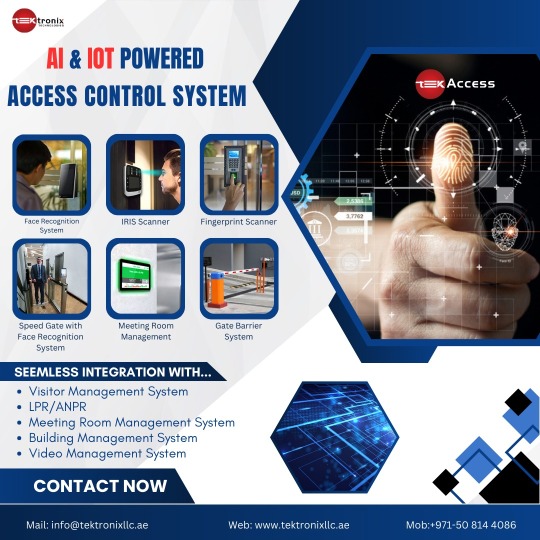
#Facialrecognitiondubai #Facialrecognitionabudhabi
#facialrecognitionattendancesystemuae #facialrecognitionattendanceuae #facerecognitionattendancesystemsharjah
#facerecognitionattendancesystemajman #facerecognitionattendancesystem #facialrecognization
#facerecognitionattendancesystemsharjah #facerecognizationsoftwareuae
#access control system#access control system supplier abu dhabi#access control system in sharjah#facial recognization uae#facial recognization abu dhabi#facial recognization in sharjah#facial recognization ajman#facial recognization in bur dubai#facial recognization system in UAE#facial recognization Solutions in Abu Dhabi#facial recognition abu dhabi#facial recognition system#facial recognition saudi arabia#facial recognition in saudi arabia#facial recognition riyadh saudi#facial recognition solutions abu dhabi#Ai Based facial recognition Software Abu Dhabi#ai based facial recognition Systems in bur dubai#facial recognition software bur dubai#facial recognition software abu dhabi#facial recognition software in ajman#facial recognition software sharjah#facial recognition attendance system#facial recognition attendance system abu dhabi#facial recognition attendance system in ajman#facial recognition attendance system bur dubai#facial recognition attendance system sharjah#facial recognition attendance system alain#facial recognition attendance system riyadh saudi arabia#facial recognition attendance saudi arabia
1 note
·
View note
Text
Credentials: Users need some form of identification to gain access. This could be in the form of access cards, key fobs, PIN codes, biometric data (such as fingerprints or retina scans), or a combination of these.
Reader Devices: These devices read the credentials provided by users. There are different types of readers, such as card readers, biometric scanners, and keypad entry systems.
Control Panel/Controller: The control panel is the central processing unit of the access control system. It receives information from the reader devices and makes decisions based on the access control policies configured in the system.
Locking Mechanisms: Physical barriers like doors, gates, or turnstiles are equipped with locking mechanisms controlled by the access control system. These can include electronic locks, electromagnetic locks, or other locking devices.
Database: A database stores information about authorized users, their credentials, and access permissions. This information is used by the control panel to make decisions regarding access.
Software: Access control systems are managed through software, which allows administrators to set up and customize access levels, view logs of access events, and make changes to the system's configuration.
Monitoring and Logging: Access control systems often include features for monitoring and logging access events. This information can be useful for security audits, investigations, and tracking user activity.
#accesscontrolsystemuae #accesscontrolsystems
#accesscontrolsysteminuae #accesscontrolsysteminsharjah #accesscontrolsystemdubai #accesscontrolsysteminstallationabudhabi
#accesscontrolsysteminstallation
#access control system abu dhabi#access control system in uae#access control system in sharjah#access control system dubai#access control system installtion#access control system installation abu dhabi#access control system installation uae#access control system installation sharjah#access control system in bur dubai#visitor access control system uae#visitor access control systems in alain#visitor access control system in bur dubai
0 notes
Text
Enhancing Office Security and Efficiency.
Tektronix Visitor Management Software

In today's fast-paced world, managing office security and streamlining visitor processes are essential for maintaining a safe and efficient workplace. To address these needs, Tektronix Technology has developed cutting-edge Visitor Management Software that offers a comprehensive solution for modern offices. In this blog, we'll explore how Tektronix's technology is transforming the way offices manage visitors, ensuring a secure and seamless experience for both employees and guests.
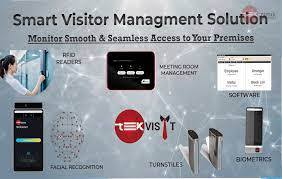
Importance
Visitor management plays a crucial role in maintaining office security and professionalism. Traditional paper sign-in sheets and manual processes are not only inefficient but also pose security risks. A robust visitor management system is necessary to.
Enhance Security :- Prevent unauthorized access to your office premises by verifying the identity of visitors and cross-referencing them with watchlists or employee databases.
Streamline Processes :- Simplify the check-in and check-out processes, reducing wait times and ensuring a smoother experience for visitors.
Record Keeping :- Maintain accurate records of visitor data for compliance, auditing, and security purposes.
Improve Professionalism :- Impress clients and partners with a modern, efficient, and tech-savvy approach to managing visitors.
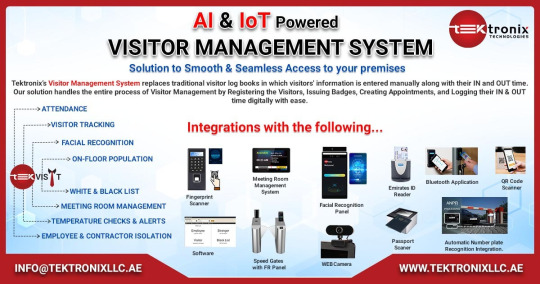
Features
Tektronix Technology has designed its Visitor Management Software with an array of features to meet the diverse needs of modern offices:
Visitor Registration :- Visitors can pre-register using a web-based interface or register upon arrival using a self-service kiosk. This minimizes wait times and ensures a faster check-in process.
Identity Verification :- The software can verify visitor identities through various means, including photo ID scanning, QR code scanning, or biometric authentication, ensuring that only authorized individuals gain access.
Access Control Integration :- Seamlessly integrate the software with your existing access control systems to grant temporary access badges or keycards to visitors.
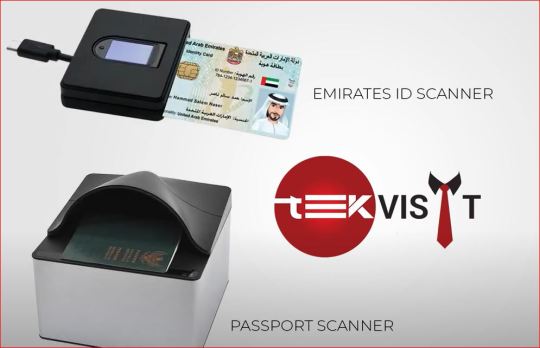
Real-time Notifications :- Notify hosts via email, SMS, or app notifications when their guests arrive, enhancing communication and responsiveness.
Customization :- Tailor the software to your office's unique requirements, from branding and logo customization to language preferences.
Compliance and Reporting :- Automatically generate visitor logs and reports for compliance with security regulations and auditing purposes.
Data Privacy :- Tektronix prioritizes data security and privacy, ensuring that visitor data is handled in accordance with the highest standards.
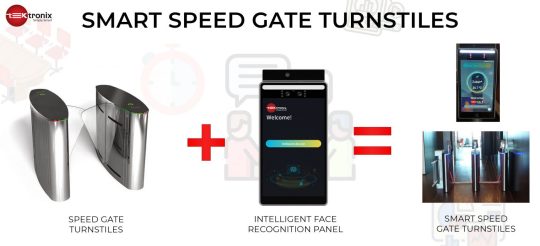
Benefits
Enhanced Security :- Protect your office against unauthorized access and enhance overall security with identity verification and access control integration.
Improved Efficiency :- Streamline visitor processes, reduce wait times, and improve the overall visitor experience.
Compliance and Reporting :- Easily maintain records and generate reports to meet compliance requirements and enhance auditing capabilities.
Professional Image :- Impress visitors with a modern and efficient visitor management system that reflects your office's professionalism.
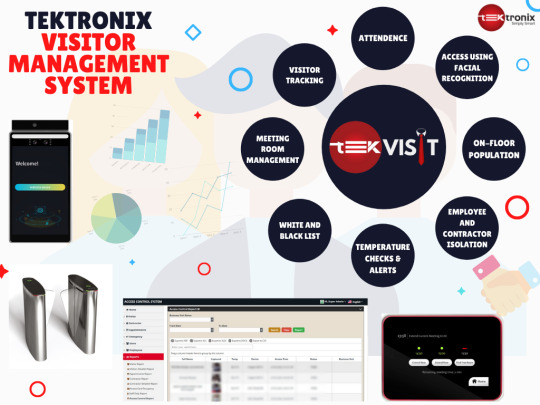
Scalability
Whether you have a small office or a large corporate headquarters, Tektronix's software is scalable to meet your needs. Tektronix Technology's Visitor Management Software is revolutionizing the way offices manage visitors. With its advanced features, security enhancements, and focus on efficiency, it's a valuable addition to any office environment. By prioritizing security, professionalism, and user-friendliness, Tektronix is helping offices create a safe and welcoming environment for employees and guests alike.
youtube
Contact Details

Tektronix Technology Systems Dubai-Head Office
[email protected] +971 50 814 4086 Office No.1E1 | Hamarain Center 132 Abu Baker Al Siddique Rd – Deira – Dubai P.O. Box 85955
#Visitor Management System#Visitor Management Software Dubai#Visitor Management Software Abu Dhabi#Visitor Management Software UAE#Visitor Access Control System#Visitor Registration System#Visitor Management System Dubai#Visitor Management System Abu Dhabi#Visitor Management Software for School#Youtube
0 notes
Text
#access control system#access control system dubai#access control system Abu Dhabi#access control system supplier#access control system supplier Dubai#access control system supplier Abu Dhabi#access control system suppliers in uae#access control system suppliers in qatar#door access control system#door access control system Dubai#door access control system Abu Dhabi#door access control system UAE#biometric access control system dubai#biometric access control system Abu Dhabi#biometric access control system Sharjah#biometric access control system Ajman#biometric access control system#access control system solutions#access control system solutions Dubai#access control system solutions Abu Dhabi#access control system solutions UAE
0 notes
Text
Tektronix Technology's Facial Recognition Device in Dubai and Abu Dhabi

Introduction
In the rapidly evolving landscape of technology, facial recognition has emerged as a groundbreaking innovation, revolutionizing various industries and sectors. One of the pioneers in this field is Tektronix Technology, a leading provider of cutting-edge solutions. This article dives deep into Tektronix Technology's remarkable facial recognition device and its transformative impact in Dubai and Abu Dhabi.
The Evolution of Facial Recognition Technology Over the past decade, facial recognition technology has evolved from a futuristic concept into a tangible reality. Tektronix Technology has been at the forefront of this evolution, consistently pushing boundaries and redefining possibilities. The company's dedication to research and development has led to the creation of a state-of-the-art facial recognition device that is both innovative and reliable.
Tektronix Technology's Facial Recognition Device : Tektronix Technology's facial recognition device is a marvel of engineering and artificial intelligence. Combining advanced hardware with sophisticated algorithms, the device is capable of accurately identifying individuals based on their unique facial features. This technology has far-reaching implications, from enhancing security protocols to streamlining user experiences across various platforms.
Applications in Dubai's Security Landscape In a city like Dubai, where technology meets luxury and innovation, Tektronix Technology's facial recognition device has found extensive applications. From securing entry points in high-profile events to managing access control in residential complexes, the device has redefined the concept of safety and convenience. Its real-time identification capabilities, coupled with a robust database, have made it an indispensable tool for law enforcement and private enterprises alike.
Transforming the Commercial Sector in Abu Dhabi Abu Dhabi's bustling commercial landscape has also embraced Tektronix Technology's facial recognition device. Retailers, in particular, have leveraged this technology to enhance customer experiences. Imagine a shopping experience where payment is as simple as a glance. The device's integration with payment gateways has not only expedited transactions but has also set new benchmarks for seamless shopping.
Navigating Privacy and Ethical Considerations As with any technological advancement, facial recognition has raised important discussions around privacy and ethics. Tektronix Technology recognizes the significance of these concerns and has implemented stringent measures to ensure data security and user consent. By adhering to international standards and best practices, the company has set a precedent for responsible technology deployment.
The Future Horizon: Innovations on the Horizon Tektronix Technology's commitment to innovation is a driving force behind its continuous efforts to enhance its facial recognition device. The company's research teams are tirelessly working to refine algorithms, improve accuracy, and explore new applications. With the potential integration of augmented reality and machine learning, the future promises even more exciting possibilities.
Collaboration and Partnerships A key factor in Tektronix Technology's success has been its collaborative approach. The company has forged strategic partnerships with local authorities, businesses, and research institutions in both Dubai and Abu Dhabi. This collaborative ecosystem fosters knowledge exchange and accelerates the adoption of facial recognition technology for the greater good.
Overcoming Challenges and Pushing Boundaries The journey of Tektronix Technology's facial recognition device has been marked by challenges that have been transformed into opportunities. From lighting variations to diverse facial expressions, the device has undergone rigorous testing to ensure its adaptability and reliability. These challenges have been instrumental in refining the technology and making it resilient in real-world scenarios.
A Glimpse into Everyday Life As Tektronix Technology's facial recognition device becomes an integral part of daily life in Dubai and Abu Dhabi, its impact resonates across various sectors. Whether it's unlocking smartphones, accessing public transportation, or attending events, the device seamlessly weaves into the fabric of modern living, adding a layer of convenience that is reshaping the way we interact with technology.
Conclusion:
Pioneering the Future In conclusion, Tektronix Technology's facial recognition device stands as a testament to human ingenuity and innovation. Its presence in Dubai and Abu Dhabi signifies a paradigm shift in security, convenience, and technological advancement. As the company continues to refine and expand its offerings, the future holds boundless potential, where facial recognition technology enhances our lives in ways, we never thought possible.

youtube

Contact
Tektronix Technology Systems Dubai-Head Office [email protected] +971 50 814 4086 Office No 209 | Caravan Café Building Clock Tower Deira Dubai UAE P.O. Box 85955.
#facialrecognitiondevice #facialrecognitiondeviceDubai #facialrecognitiondeviceAbuDhabi #Facialrecognitioncamera
#FaceRecognitionaccesscontrolattendancesystem #FaceRecognitionaccesscontrolattendancesystem #facialrecognitionaccesscontrolsysteminstallation
#biometricfacialrecognitiondevice #biometricfacialrecognitiondeviceDubai #biometricfacialrecognitiondeviceAbuDhabi #HikvisionFaceRecognitionAccessControl
#facial recognition device#facial recognition device Dubai#facial recognition device Abu Dhabi#Facial recognition camera#Face Recognition access control attendance system#facial recognition access control system installation#biometric facial recognition device#biometric facial recognition device Dubai#biometric facial recognition device Abu Dhabi#Hikvision Face Recognition Access Control
1 note
·
View note
Text
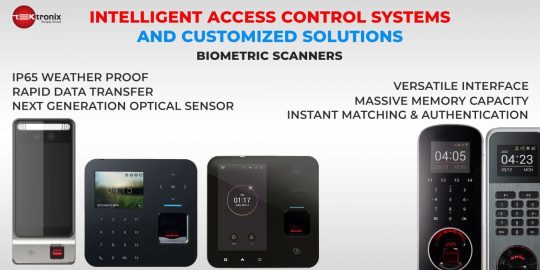
#Access Control System#Access control System Dubai#Access Control System Abu Dhabi#Door Access Control System for office.
0 notes
Text

CATALYST JOURNAL
The Gulf states are transit states because migrants constitute a majority of their populations. The politics of labor control is central to the organization of these states and to the predominance of their political and capitalist classes. The contradiction of Gulf labor politics lies in the autocratic nature of rule based on nonmarket forms of labor control and the continuous demand of the market for a willing labor force.
“When I was coming here [Abu Dhabi], I was asked ten types of questions [by Indian emigration officials] and when non-Muslims went through immigration, they & nbsp;. . . just stamped [the passports] and let them go. This is the reason that Muslims tend to go abroad. We don’t get opportunity there [in India].”1
“It’s just like when the Europeans transported and sold Africans into slavery in America. What happened to the Africans then, happens to us now. We are transported here, the company sells us, commands us. There is no choice. In Nepal, we changed from a kingdom to a republic. If we could take action, if we could organize a strike, we could change this country.”2
During the first decade of the twenty-first century, Sheikh Mohammed al-Maktoum, the self-styled “CEO of Dubai” and its ruler, initiated a construction boom that would turn Dubai into the “city of the future,” a testament to its leadership of a neoliberal Gulf and a model to be emulated elsewhere. As the primary owner of much of Dubai’s real estate and the head of a conglomerate of companies bound to his new vision, Sheikh Mohammed turned Dubai into a node for global finance capital, trade, and consumerism.3 Within a few years, Dubai’s population of migrants, most of them workers, amounted to close to 90 percent of its population. Qatar was soon to follow when, in 2010, it won the right to host the 2022 FIFA World Cup. Hundreds of billions of dollars were invested in twelve football stadiums, highways, train stations, hotels, and entertainment facilities. Hundreds of thousands of workers rotated in and out of Qatar over twelve years to build and maintain the social and auxiliary economic infrastructure these investments required. By 2017, migrants made up 95 percent of Qatar’s labor force and 89 percent of its population. While the United Arab Emirates (UAE) and Qatar have the highest proportions of migrants to citizens, in all other countries of the Gulf Cooperation Council (GCC) except for Saudi Arabia, migrants make up more than half of the population, accounting for thirty million people.4
The Gulf states are transit states, according to political economist Adam Hanieh. They are dependent on the employment of migrants who have no hope of obtaining citizenship because of restrictive laws established in the 1930s.5 Access to citizenship is the most important factor that shapes the rights of migrants. Migrants’ permission to work and live in the country is regulated by a kafala, sponsored by their employers (usually citizens) and regulated by the state, which sets limits to their stay and restricts their ability to change jobs and leave the country. It ensures that migrants, laborers and otherwise, remain transitory residents, excluded from citizenship and deprived of the ability to remain in the country. Abuse of labor under the kafala system is common. It includes restricting the ability of workers to change jobs if their employers do not fulfill their promises. Should the migrants leave their jobs, they become illegal residents. Their very illegality makes them vulnerable to further abuse. Employers often do not pay wages on time or withhold them.6 Wage theft is one of the major complaints that migrants have about their working conditions.7 Migrant workers have no political rights to organize in their own interest because Gulf countries have labor laws that are confined to their own citizens. It is left to international organizations to intervene. These organizations frame workers’ rights as human rather than political rights. As a result, their interventions are dependent on the willingness of the Gulf states to implement them.
The International Labour Organization, Human Rights Watch, and other organizations have turned their attention to the lack of protection and rights of migrant laborers and have succeeded in mitigating some of the abuses. These attempts do not account for the structures that have historically linked capital accumulation by oil companies and the petrostates of the independent Gulf with the regional and global networks and companies that recruit and manage labor. In addition, for the ruling elite in countries so dependent on hydrocarbon and its derivates, finding an acquiescent and disposable labor force is critical for maintaining production, building alliances, and sustaining a class of national capitalists wedded to the perpetuation of labor control.8 Oil companies and the rulers of the GCC states learned this lesson after a series of labor strikes by local migrant Pakistani, Indian, and Arab workers — many inspired by the anti-colonial struggles in the region — threatened to undermine what they termed the “stability” of the relations between labor, capital, and the state.9
The Political Economy of Labor in the Gulf
The processes that inform labor recruitment, management, and control in the Gulf have much in common with the attempts by other states and corporations in capitalist economies to manage labor. We can only look at the difficulties workers at global corporations like Amazon and Starbucks have in unionizing and the outsourcing by Western corporations of most clothing manufacture to Asian countries to understand how global capital, supported by states, searches for politically acquiescent cheap labor. Unlike other capitalist economies, however, the politics of labor in the Gulf plays an outsize role because of the constant need for a supply of overseas labor and the size of the migrant population. As a result, the question of how to deal with migrant workers is central to the organization of the state and to the predominance of a Gulf elite and capitalist class whose ethnicity gives it rights of citizenship and class dominance. In her study of the labor organization of construction workers in Dubai, Michelle Buckley finds that the central contradiction is the hybrid nature of the form of neoliberal capitalism that governs workers’ lives. The autocratic nature of rule in the Gulf states based on nonmarket forms of labor control, exemplified in the kafala system on the one hand and the continuous market demands by corporations for willing labor on the other, allows for a limited range of political action by workers in the region.10
The politics of labor in the Gulf is part of larger historical processes of the expansion of capitalism and empire and the regulation of flows of labor that began in the nineteenth century in the Indian Ocean world, of which the Gulf constituted a critical node. Much of the labor practices and the administrative and legal structures that have been set to regulate labor migration have roots in British colonial administrative laws deriving from its rule in India. The question of origin is important in drawing attention to the fact that the labor regimes that have historically developed in the Gulf are regional adaptations intended to control labor migration, such as indenture, contract labor, and free illegal labor, that have been critical to the growth of global capital in its various iterations. Despite such origins, the neoliberal politics of labor migration are not merely reproductions of old modes of labor control from the capitalism that shaped the advent of empire in the Gulf and the Indian Ocean.
The current practices of labor control do not trace their lineages in slavery, despite the relatively recent (mid-twentieth-century) abolition of slavery in the Gulf. Nor do modern forms of recruitment and regulation of labor bespeak a form of bondage like indenture, although the Indian government has adopted the logic and language of indenture regulation in early twentieth-century British India to regulate the flow of migrants from its country.11 The laborers who flock to the Gulf do so voluntarily as free citizens of national states and are motivated by a variety of reasons, both economic and social. Neoliberal capitalism, according to anthropologist of labor Andrea Wright, disarticulates the social from the economic by framing migrant workers simply as economic actors in a system of accumulation. Migrants’ social networks and family obligations and their dreams of social mobility inform their decision to migrate.12 The GCC and the sending countries view labor as a commodity that can be sold according to market mechanisms. In the words of Filippo and Caroline Osella, the “universalizing discourse of neoliberalism — the dream of self-regulating markets disembedded from social, cultural, or political straitjackets — is at its very heart utterly implicated in the production of practices — central to its global working — that differentiate and advantage players on the basis of anything but purely economic criteria.”13 Using the term “bondage” as a shorthand for labor controls in the Gulf might be a useful discursive tack for labor activists, but it obfuscates the very different structural factors that shape migration and work in the twenty-first century, and it reduces workers to victims incapable of political action without the intervention of international human rights organizations.
In what follows, I address two such structural factors: the complex and commodified forms of kafala that furnish the legal and economic infrastructures that regulate migrants’ lives, and the strategies that Gulf states and companies develop to recruit, enclose, and divide workers along racial/ethnic, gender, and skill/class lines. Despite what appear to be insurmountable obstacles to labor organization, migrant workers have developed several strategies to demand their rights. I draw on the work of scholars of labor activism to conclude with some thoughts on the limits and possibilities of workers’ actions.
(Continue Reading)
#politics#the left#dubai#uae#gulf states#slavery#oppression#capitalism#catalyst#catalyst journal#jacobin magazine#jacobin
8 notes
·
View notes
Text
The Ultimate Guide to Cable Trays: Maximizes Efficiency in Business and Home
In UAE, where modern infrastructure and high-tech facilities are the norm, efficient cable management is crucial for both businesses and homes. Whether you're an individual homeowner, a small business owner, or part of a large corporation, managing cables effectively can enhance safety, improve aesthetics, and optimize the performance of your electrical and data systems. This guide focuses on three key components of cable management: cable trunking, PVC trunking, and cable trays.
Understanding Cable Trays

Cable trays are rigid, open structures designed to support and route cables. They come in various types: open trays for maximum ventilation, ladder trays for easy cable access, solid bottom trays for extra protection, and wire mesh trays for flexibility. This variety allows UAE businesses and homeowners to choose trays that best fit their needs, whether it's managing high-density cabling in a Dubai data center, organizing cables in an Abu Dhabi smart home, or protecting wires in a Ras Al Khaimah manufacturing plant.
Materials Used
Cable trays in UAE are made from materials chosen for durability and climate-resistance. Galvanized steel offers strength and corrosion resistance, crucial in humid cities like Dubai. Stainless steel suits high-end applications or corrosive environments. Aluminum trays are lightweight, ideal for easy installation in high-rise buildings. Fiberglass trays resist chemicals, perfect for UAE's growing manufacturing sector. These materials ensure cable trays withstand the UAE's diverse and challenging environments.
Why Cable Trays are Essential in UAE

Climate Considerations : The UAE's climate makes cable trays essential. With temperatures soaring, especially in inland areas like Al Ain, cable trays' open design allows heat to dissipate, preventing cable damage and system failures. In coastal cities like Dubai and Abu Dhabi, high humidity and salt air can corrode infrastructure. Cable trays made of corrosion-resistant materials like galvanized or stainless steel protect cables from these elements. This climate resilience is crucial for businesses relying on uninterrupted data and power, and for homeowners investing in long-lasting smart home systems.
Rapid Technological Growth: The UAE is at the forefront of technological innovation, with initiatives like Dubai Smart City and Abu Dhabi's economic vision 2030. These projects require robust, flexible cable management. Cable trays shine here, easily accommodating the frequent additions and changes in cabling as technologies evolve. In bustling tech hubs like Dubai Internet City or Abu Dhabi's twofour54, businesses frequently upgrade their systems. Cable trays make these transitions smooth, reducing downtime and costs. Their future-proof infrastructure, a critical factor inUAE's fast-paced, tech-driven economy.
Diverse Application Across Sectors : Cable trays' versatility makes them indispensable across UAE's diverse sectors. In data centers supporting Dubai's status as a digital hub, cable trays manage vast networks of data cables. In Jebel Ali's manufacturing plants or Sharjah's industrial areas, they route power cables safely. High-end retailers in Dubai Mall or Abu Dhabi's Galleria use cable trays to create clean, uncluttered spaces that elevate customer experience. Hotels in Jumeirah or Saadiyat Island integrate cable trays for seamless AV and smart room controls. Even in luxury homes, from Palm Jumeirah villas to Reem Island apartments, cable trays organize smart home wiring discreetly.
The Role of PVC Trunking

PVC (Polyvinyl Chloride) trunking is a specific type of cable trunking that deserves special mention due to its extensive use in UAE.
Scalability and Flexibility: Cable trays offer unmatched adaptability for UAE businesses. In Dubai Media City's growing SMEs, new workstations are easily accommodated by laying cables in existing trays. Sharjah manufacturers can quickly reconfigure power lines when rearranging machinery. This flexibility is vital in UAE's dynamic market, where businesses must evolve rapidly to stay competitive.
Cost-Effectiveness: In UAE's competitive landscape, cable trays deliver significant savings. Their open design makes installation faster than enclosed conduits like cable trunking, reducing labor costs for startups in Hub71 or DIFC. Maintenance is simpler too; technicians can quickly fix issues without dismantling entire systems, optimizing costs for SMEs and large corporations alike.
Safety and Compliance: Cable trays meet UAE's stringent safety standards. Their open design prevents overheating, a critical risk in UAE's hot climate, in environments like Ducab's plants or Dubai Silicon Oasis data centers. They also ensure clear cable organization, preventing hazards like tripping. This commitment to safety ensures passing inspections and boosts business reputation.
Aesthetic Appeal: In UAE's luxury-focused environment, cable trays offer clean, organized aesthetics. High-end retailers in Dubai Mall and Abu Dhabi's Galleria use them to hide wires, aligning with brand images. In corporate offices like Emirates and Etihad Towers, neatly organized trays reflect professionalism, impressing clients and partners in UAE's image-conscious business world.
Conclusion
In UAE's vibrant, tech-forward environment, cable trays are more than just wire managers; they're enablers of efficiency, safety, and style. From the towering data centres of Dubai to the smart villas of Abu Dhabi, cable trays support the infrastructure that drives the UAE's growth. They withstand the challenges of the climate, adapt to rapid technological changes, and enhance spaces across diverse sectors. By investing in quality cable trays, UAE businesses and homeowners aren't just organising cables; they're future-proofing their spaces, ensuring safety, and maintaining the high standards that define the UAE. In this dynamic nation, cable trays are an unseen yet indispensable foundation of success, playing a key role in comprehensive cable management solutions alongside cable trunking and PVC trunking.
4 notes
·
View notes
Text
biometric access control system installation
biometric access control system in Abu Dhabi
Biometric Access Control System in Sharjah
Biometric Access Control System in Sharjah
Biometric Access Control Systems in UAE
access control system with facial recognition Software
#Best Access Control Systems#access control supplier abu dhabi#access control system supplier in Saudi Arabia#access control system supplier in Riyadh#access control system supplier in Qatar#access control system supplier in Alain#access control system supplier Bur Dubai#access control system supplier in Sharjah#access control suppliers#access control system#biometric access control system dubai#biometric access control system#biometric access control system bur dubai#biometric access control system saudi arabia#door access control system supplier in dubai#biometric access control system installation in sharjah#biometric entry system UAE#biometric entry system in Sharjah#biometric access control installation in UAE#biometric access control installation in Sharjah#biometric access control installation in alain#biometric access control installation in bur dubai
0 notes
Text
youtube
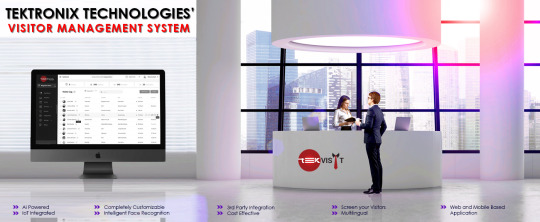
VMS With Facial recognition technology offers a robust layer of security by accurately identifying individuals based on their unique facial features. Unlike traditional methods such as ID cards or manual verification, facial recognition eliminates the risk of forged or stolen credentials. By cross-referencing visitor faces with a database of known individuals, security personnel can quickly identify potential threats and take necessary precautions.
Visitor Managemnet System
Visitor Registration Software
Visitor Access Control System
Visitor Management Software UAE
Visitor Access Control Systems Abu Dhabi
Visitor Management With Face recognition
#visitor management system in bur dubai#visitor registration software abu dhabi#visitor registration system in alain#visitor access control system in alain#visitor registration system in ajman#visitor management system in qatar#visitor management sytsem in qator#visitor access control systems in saudi arabia#visitor registration software#visitor management system in alain#visitor management system for office#visitor management system for office uae#visitor management system for office abu dhabi#visitor management system for office in sharjah#visitor management system for office oman#visitor management system for office qatar#visitor management system for office alain#visitor management system for schools#visitor management system for schools uae#visitor management system for schools abu dhabi#visitor management system for schools in ajman#visitor management system for schools oman#visitor management system for schools qatar#visitor management system for schools bur dubai#Youtube
0 notes
Text
Precision Maintenance with Dry Ice Blasting in Oil & Gas
Maintenance in the oil and gas sector is high-stakes. Even brief shutdowns can cost millions, and cleaning sensitive machinery with traditional methods can pose safety or efficiency risks. This is where dry ice blasting has become a trusted solution across facilities in the UAE.
Dry ice blasting uses compressed air to shoot CO₂ pellets at high velocity onto surfaces. Upon impact, the pellets remove layers of contaminants like grease, oil, paint, or corrosion — all without leaving behind moisture or residue. The process is non-abrasive, non-toxic, and safe to use on live systems, making it a perfect fit for complex environments such as refineries and offshore rigs.
Designed for Demanding Environments
Unlike sandblasting or chemical cleaning, dry ice blasting doesn’t damage surfaces or require major disassembly. It allows maintenance teams to clean machinery in place, drastically reducing downtime and labor costs. Components like compressors, valves, and heat exchangers can be cleaned thoroughly and quickly, keeping operations running smoothly.
For companies maintaining critical infrastructure, having access to professional dry ice cleaning services means they can stay on top of performance and safety standards without interrupting production schedules.
The Right Equipment Makes the Difference
Not all dry ice blasting tools are created equal. In high-demand environments, only heavy-duty, industrial-grade machines are suitable. Investing in the right blast cleaning machine or working with professionals who use them ensures deeper cleaning, better control, and faster job completion.
From powerful Cold Jet units to portable dry ice cleaning systems, advanced machinery helps reach complex or confined areas — often without dismantling the entire structure. This is especially valuable in oil and gas maintenance, where access is often restricted and speed is critical.
Local Support You Can Count On
In a country like the UAE, where extreme weather and nonstop operations are common, access to dry ice and equipment must be quick and reliable. Working with experienced providers who offer dry ice delivery Dubai ensures you're never delayed by supply issues during time-sensitive projects.
Whether it’s a scheduled maintenance job or an emergency system shutdown, having a dependable supply and responsive service team is key to getting back online faster — and safer.
Contact Information
Eco Green Dry Ice Services Oil & Gas Industries LLC Office No.7, Plot.84, Musaffah Industrial Area, M26, PO Box.No. 9065, ABU DHABI (United Arab Emirates) 📞 Call: +9712 5557085, +971 555444118 🌐 Website: www.dryiceecogreen.com
#DryIceUAE #OilAndGasMaintenance #DryIceBlastingUAE #IndustrialCleaning #EcoFriendlyMaintenance #ColdJetBlasting
0 notes
Text
#Visitor Management Software abu dhabi#visitor management Systems UAE#Visitor Management Systems in Dubai#Visitor Access Control Systems in Sharjah#Visitor Registration systems in abu dhabi#visitor registration software in bur dubai#visitor access control systems in ajman#Visitor Access Control Systems in Ajman#visitor tracking system#Visitor Access Control Systems#visitor registration system
0 notes
Text
Visitor Management Systems With Emirates id Integrations
Creating a visitor management system with Emirates ID integration involves combining visitor registration and check-in processes with the verification of visitors using their Emirates ID cards. Here are the key steps to create such a system:
System Requirements and Planning
Define the specific requirements and goals of your visitor management system.
Identify the hardware and software needed, including Emirates ID card readers and compatible software.

Emirates ID Card Reader Integration
Acquire Emirates ID card readers that can extract data from the cards.
Integrate the card readers with your system, which may involve writing or obtaining software drivers for communication.
Visitor Registration :-
Create a user-friendly visitor registration interface where visitors can input their information.
Capture necessary visitor details, such as name, purpose of the visit, date, and time.
Include a field for Emirates ID card scanning.
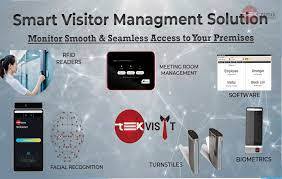
Data Validation :-
Implement data validation routines to ensure the accuracy and completeness of the visitor's information.
Verify that the scanned Emirates ID card matches the entered data.
Database Integration :-
Store visitor information and check-in/check-out times in a secure database.
Ensure data encryption and security measures to protect visitor data.
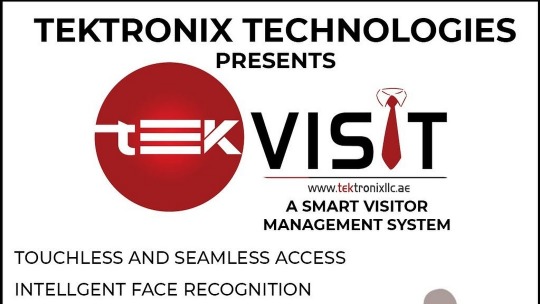
Notification System :-
Implement a notification system to alert hosts when their visitors arrive.
Send automatic notifications via email, SMS, or a mobile app.
Access Control :-
Integrate your system with access control mechanisms, such as electronic door locks or turnstiles, to grant or deny access based on visitor status.
Emirates ID Verification :-
Develop a module that communicates with the Emirates ID card reader.
Retrieve relevant data from the card, such as name, date of birth, and Emirates ID number.
Validate the ID card against a government database for authenticity.

Visitor Tracking :-
Maintain a real-time log of visitor movements within the premises.
Allow hosts to view the status and location of their visitors.
Reporting and Analytics :-
Provide reporting capabilities to generate visitor logs, statistics, and analytics.
Create reports for security audits and compliance.
Compliance with Regulations :-
Ensure that your system complies with UAE data protection and privacy regulations.
Keep up-to-date with any changes in laws related to visitor management.

User Training and Support :-
Train employees and system users on how to use the visitor management system effectively.
Offer ongoing support and maintenance for the system.
Testing and Quality Assurance :-
Conduct thorough testing to identify and address any bugs or issues.
Test the system with various scenarios, including different types of visitors and Emirates ID cards.
Deployment :-
Deploy the system across your organization or at client sites.
Ensure a smooth transition from any existing visitor management processes.
Monitoring and Updates :-
Continuously monitor the system's performance and security.
Provide regular software updates and improvements.
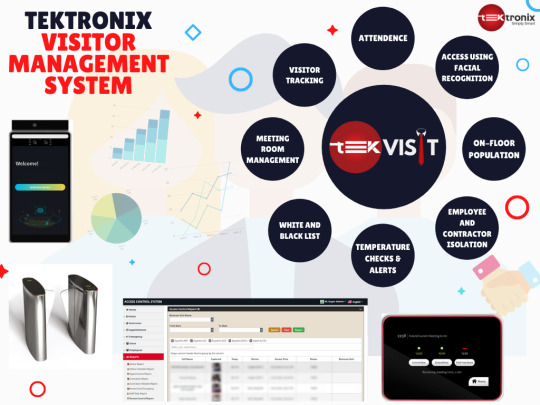
Feedback and Iteration
Gather feedback from users and hosts to make necessary improvements.
Consider adding features based on user needs and changing regulations.
Implementing a visitor management system with Emirates ID integration can enhance security, streamline visitor check-in processes, and improve overall visitor experience. However, it's important to work with professionals who are knowledgeable about UAE regulations and data security to ensure compliance and protect visitor privacy.
youtube
Contact Details

Tektronix Technology Systems Dubai-Head Office
[email protected] +971 50 814 4086 Office No.1E1 | Hamarain Center 132 Abu Baker Al Siddique Rd – Deira – Dubai P.O. Box 85955
#Visitor Management System#Visitor Management Software#Visitor Management Software Dubai#Visitor Management Software Abu Dhabi#Visitor Management Software UAE#Visitor Access Control System#Visitor Registration System#Youtube
0 notes